THROWING A BLOCK PARTY? WHAT YOU NEED TO KNOW

4
WHAT ASSOCIATIONS SHOULD REQUEST FROM DEVELOPERS PAGE 8
GUIDE TO RECALL ELECTIONS
KEEP ON TOP OF WHAT’S IN HOA CONTROL
IN TRANSITION
FOR MANAGERS PAGE 14
PAGE 16
COMMON AREA SAFETY PAGE
BRINGING BACK CIVILITY TO BOARD MEETINGS PAGE 6
FALL 2023
Fall 2023 Law Journal Editorial Committee
Chief Editor
Attorney Guest Editor
Fred Whitney, Esq. Whitney | Petchul
John Hansen, Esq. Baydaline & Jacobsen, LLP
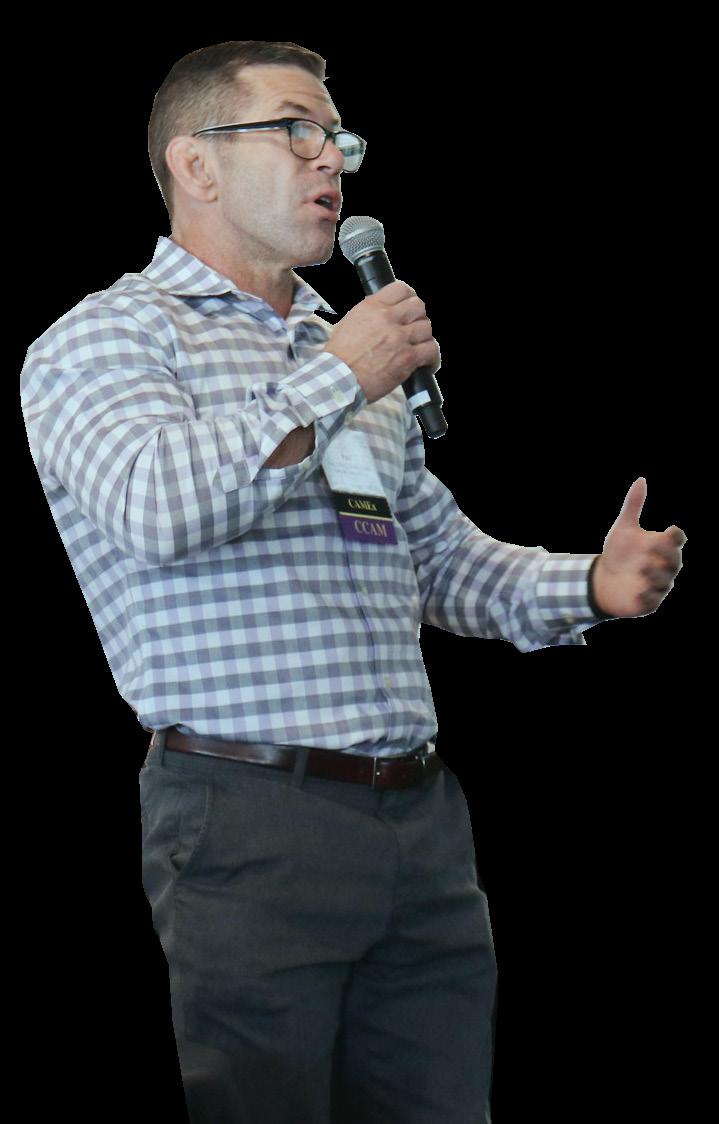
Fall 2023 Law Journal Committee Members
Garrett Wait, Esq. Kriger Law Firm
Jasmine F. Hale, Esq. Berding | Weil LLP
Jill Morgan, CCAM Allure Total Management
Hamlet Vazquez, MCAM-HR Wilshire Terrace Co-Op
Lorena Sterling, CAFM Community Association Financial Services (CAFS)
An archive of past issues can be found under Member Resources at CACM.org

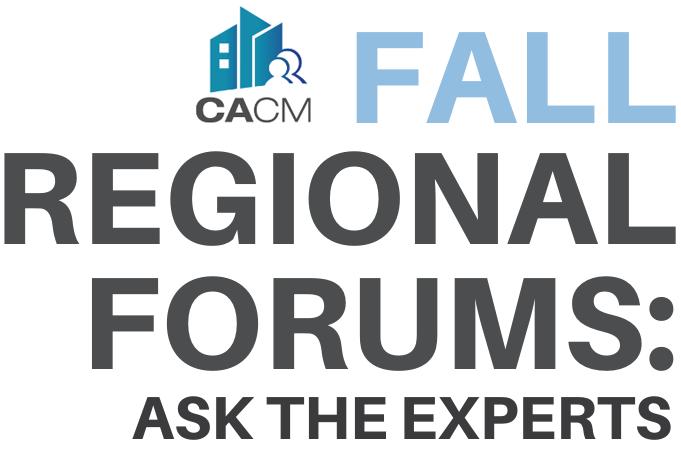
The CACM Law Journal is a digital publication distributed four times per year to all members, in addition to supporters of the California Association of Community Managers.




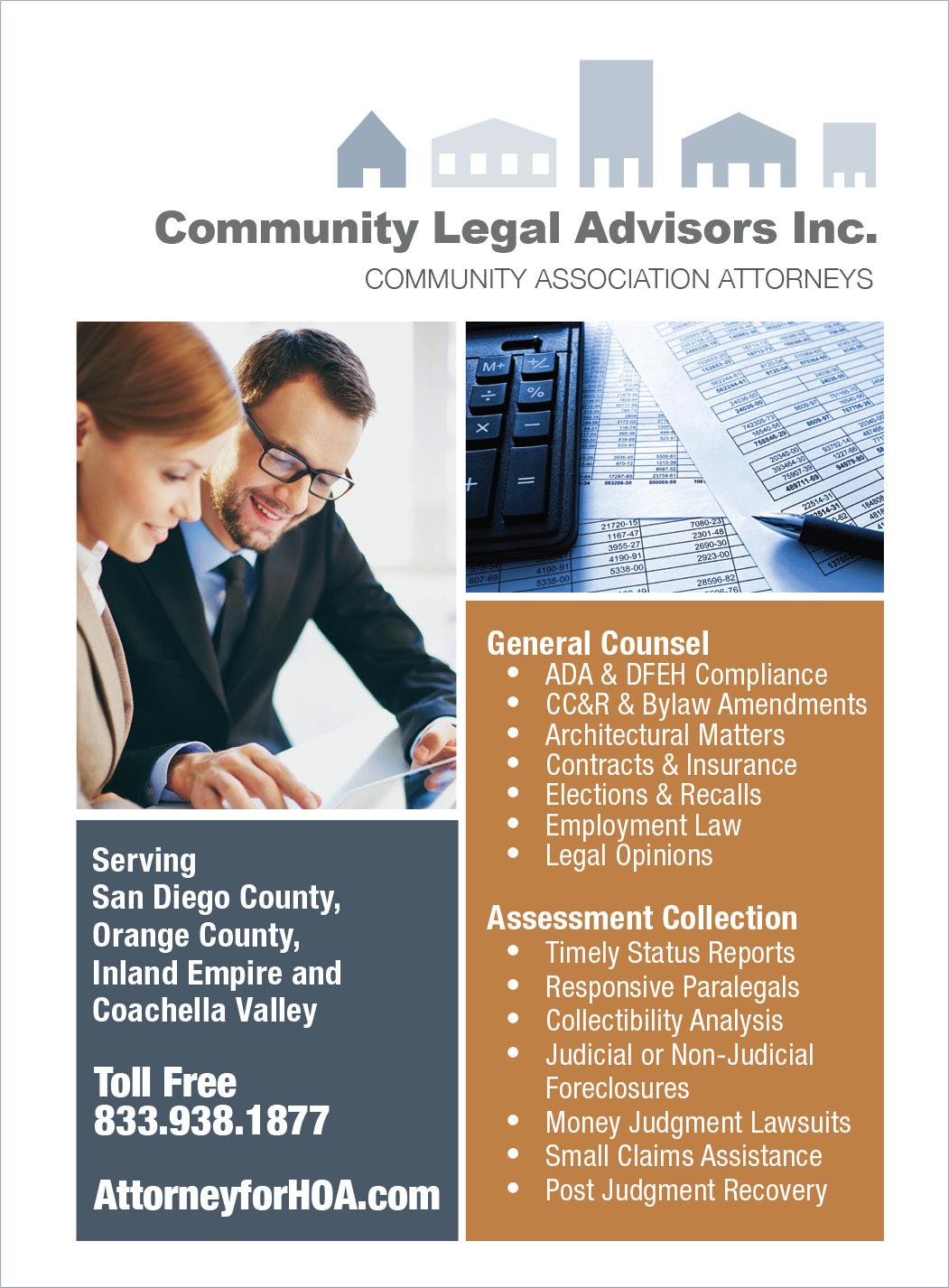


DISCLAIMER: CACM does not assume responsibility for the accuracy of articles, events or announcements listed. Please be advised that the opinions of the authors who contribute to the Law Journal are those of the author only, and do not necessarily reflect the opinions of CACM and other industry attorneys. Please note that in a constantly evolving industry there are frequently multiple interpretations of the controlling statutes and case law. The information contained in these articles is of a general nature and not intended as legal advice. If you have any questions, please discuss them with your association’s legal counsel.
Join
2 The Law Journal Fall 2023 | cacm.org
Fall 2023
Follow @CACMchat A PRACTICAL REVIEW OF COMMUNITY MANAGEMENT LAW Interested in advertising in CACM’s Law Journal? Reach out to us at marketing@cacm.org
us for breakfast or lunch and ask your most pressing questions of our industry experts. Attending industry partners will be on hand to discuss key issues and
Plus, learn from
who are
You will walk
with
list of new strategies and ideas to
in your communities.
solutions.
and network with peers
facing similar challenges.
away
a
implement
REGISTER NOW: CACM.org
Letter from the Guest Editor
The job of a community manager is difficult and requires being skilled and knowledgeable in multiple areas. Law Journal articles are centered on mastering the foundational areas of expertise applicable to community managers found in the Business and Professions Code §11502 and are the subjects that a certified common interest development manager must complete at least 30 hours of coursework in as part of the certification process.
A day for a community manager may involve planning a seasonal party at the clubhouse and figuring out if a liquor license is needed, responding to reports of mail thefts or vandalism, getting a lifted sidewalk repaired, receiving a recall petition, educating the lone homeowner director on a developer-controlled board about what an HOA is, and ending that day with a contentious and unproductive meeting that lasts three hours.
There are countless other highly complex and legally significant issues you will face on the same day, and you are expected to know how to do all of them. This issue will cover these topics in a way that equips managers to handle and resolve them more effectively. There is always more to learn and ways we can sharpen one another.
 John D. Hansen, Esq., is a partner at Baydaline & Jacobsen LLP in Sacramento, which serves as general counsel to community associations. He has 14 years of experience advising boards of common interest developments on HOA law.
John D. Hansen, Esq., is a partner at Baydaline & Jacobsen LLP in Sacramento, which serves as general counsel to community associations. He has 14 years of experience advising boards of common interest developments on HOA law.

cacm.org | The Law Journal Fall 2023 3
“There are countless other highly complex and legally significant issues you will face on the same day, and you are expected to know how to do all of them.”
By A.J. Jahanian, Esq.
Getting Social Making Your Community’s Next Event a Success!

If community associations don’t ultimately serve a higher purpose of fostering a sense of community, pride, and neighborliness, are they meeting their full potential? We know that common interest development (or HOA) living often provides the benefits of safety and security, as well as protected property values, but they can also play a crucial role in fostering a sense of belonging and camaraderie among the residents. If done right, hosting social events in common areas can strengthen community bonds. That begs the question, how can associations ensure that social events are “done right?” While it may sound easier said than done, community leaders must prioritize safety without compromising fun.
Boards and property managers can ensure enjoyable and safe (and legally compliant) social events within their communities by first working with counsel to assess the common area risk and liabilities. When confirming the specific common area location where the event will be held, identify higher-risk areas, such as those with uneven surfaces, insufficient lighting, or inadequate emergency exits. Perhaps holding a capacity event around the swimming pool, where children may attend without barriers or precautions, is an event the board would rather pass on. To the extent the association can implement appropriate
4 The Law Journal Fall 2023 | cacm.org
mitigation measures to address these risks effectively, it should do so. In addition to physical mitigation measures such as repairing uneven surfaces before the event, installing appropriate signage or barriers, or installing adequate lighting, mitigation also includes securing appropriate liability insurance to protect both the association and its residents in case of accidents or injuries during the event.
Can a sense of community and camaraderie really be enhanced at an association-sponsored event without alcohol? We would like to think so, but it’s worth mentioning the risks that alcohol service creates, as well as ways to mitigate same.

First, management and boards should consult with the association’s legal counsel regarding any alcohol laws, such as licensing requirements or permits, as those may be required to host an event where alcohol is served. Alternatively, the association may choose to hire a professional caterer who serves alcohol but should nonetheless confirm that they are appropriately licensed (and insured) to handle alcohol service.

Second, boards should decide in advance whether the association will be charging the residents any fees to attend the event where alcohol is being served. Charging a fee for admission or for the cost of beverages increases the association’s exposure to liability for injuries that may occur as a result of alcohol consumption. Civil Code §1714(c) states that no “social host” who furnishes alcoholic beverages to a person can be held legally accountable for their injuries (or death) resulting from their consumption of those beverages. In other words, the exchange of money modifies the “social host” relationship of the association to the partygoer residents.
Third, Business and Professions Code §25602(a) makes it a misdemeanor to sell or provide alcohol to any “habitual or common drunkard or to any obviously intoxicated person.” This means that the association, or the hired catering company, must take extra care to cease service to any obviously intoxicated attendees. Finally, insurance is key. As the association’s general liability policy likely will not include coverage for liquor liability, boards should consult with the association’s broker and, if applicable, obtain adequate “host liquor liability” insurance.
Policies and waivers aren’t exactly the best mood setters for a fun social event, but implementing these and obtaining attendees’ signatures is an added layer of protection for the association and residents. These policies and/or waivers should address behavior, alcohol consumption limits, and

expectations for event attendees while clearly communicating that residents and attendees participate in the event, consume alcohol, or otherwise, at their own risk. Again, it is important to consult with legal counsel to ensure that the policies and waivers are legally enforceable and effectively communicate potential risks associated with the event.
Effective planning and organization are crucial to hosting safe and successful community events. Management should collaborate with the board to establish event goals, budgets, timelines, insurance coverage, and any security precautions. Considering factors such as the size of the common area, expected attendees, and the nature of the event will help ensure that adequate resources are available and that the risks mentioned above are mitigated. Community collaboration in the planning process is also an option. Let’s face it, boards and managers are busy enough, and having some additional input can’t hurt. To this end, the board may want to establish a dedicated event committee of community volunteers to assist with planning and execution. Committee members can be tasked with event promotion, logistics, implementing safety measures, and ensuring a coordinated effort (all at the final direction of the board).
By prioritizing safety and legal compliance and implementing effective policies and procedures, community leaders can create an enjoyable and safe social event. Management and board members play a crucial role in this process, but they are not alone. By effectively collaborating with community volunteers and trusted advisors, they can create a vibrant and memorable experience that strengthens bonds within the community. Fostering a sense of unity and camaraderie through HOA-sponsored events contributes mightily to the overall well-being and satisfaction of the residents.
cacm.org | The Law Journal Fall 2023 5
A.J. Jahanian, Esq. is an associate attorney with Beaumont Tashjian serving associations in Los Angeles, Orange County, Kern County, Inland Empire, and the Central Coast.
KEEPING IT CIVIL HOW TO HAVE BETTER BOARD MEETINGS
BY STEPHEN M. LEVINE, ESQ.
Board meetings can be mundane, businesslike, and peaceful, but if there is a contentious issue in the community, a meeting can become combative and out of control. What can a property manager advise a board to do to avoid such a meeting?


Board members should expect that a meeting will run efficiently, fairly, and with full participation. It is up to the president and the members of the board to maintain common courtesy and decorum. It is always best for only one person at a time to have the floor and for every speaker to be first recognized by the president before proceeding to speak.
AGENDA
AGENDA
Every board member should have the opportunity to discuss any agenda topic, and the discussions should be focused on an open dialogue. It is the president’s responsibility to limit discussions to the agenda items and to begin the meeting on time. An agenda is required by law to be posted (together with the notice of the meeting) at least four days prior to the meeting (Civil Code §4920(a)) which will aid in keeping the meeting focused on the agenda. Thus, it is important that a draft agenda be circulated by a property manager to board members for their input prior to posting in the community. A detailed and thorough agenda ensures accountability and transparency, which homeowners want and often demand.
CODE OF CONDUCT
CODE OF CONDUCT
For meetings to be successful, boards should make sure that simple guidelines are followed. Board members should be on time, be prepared (having reviewed the board packet in advance of the meeting), refrain from interrupting others, be courteous, and allow differing points of view. Many boards adopt a code of conduct that board members execute when they first join the board. This code will set forth the guidelines to provide a roadmap for the behavior of board members and to emphasize that board members are to treat members of the community with respect and equality.
6 The Law Journal Fall 2023 | cacm.org
RECORDING MEETINGS
RECORDING MEETINGS
Some boards want to record a meeting believing that board members and homeowners might conduct themselves with better decorum if the meeting is recorded. However, homeowners will often want to record the meeting because they may be threatening litigation or want to intimidate participants. A homeowner does not have a right to record board meetings as they are private meetings (for homeowners of record only and any guests invited by the board), so a board may establish rules for the conduct of their meetings and disallow homeowners from recording the meetings. Many boards will state that they are only recording a meeting for the purpose of preparing board minutes and that any recording will be destroyed after the minutes are prepared.
OPEN FORUM
OPEN FORUM

Often, meetings become confrontational during the open forum. As an initial matter, only homeowners (and invited guests of the board) may attend a board meeting (Civil Code §4925), and some associations have their property manager check in with each member before the meeting begins to make sure that the individual is a member of the association. Such an action may be preventative in nature, as tenants, relatives, and those not on title are not allowed in the meeting. It is often that these individuals are the most disruptive to board meetings.
California law provides that each homeowner has the right to address the board. Civil Code §5000(b) provides that “The board shall permit any member to speak at any meeting of the membership of the association. A reasonable time limit for all members to speak at a meeting of the association shall be established by the board.” Thus, the board should set a reasonable time limit for comments from homeowners. Generally, three to five minutes give each person enough time to express their questions and concerns, and the time limit may vary from community to community. Make sure that someone is tasked with timing each speaker. A board will need a strong leader or property manager who can enforce the amount of time allowed for each open comment.
It is extremely important to explain to homeowners that the board cannot discuss or take any action on an item that was not on the meeting agenda (California Civil Code §4930(a)), but the board may briefly respond to statements made or questions posed by a homeowner (Civil Code §4930(b)) or can


request that its property manager report back to the board at a subsequent meeting concerning the matter or request that the item be placed on a future agenda (Civil Code §4930(c)(2)). Make sure these expectations are clearly explained to homeowners prior to the open forum. If the expectations are clearly explained beforehand, it can reduce the number of homeowners who leave frustrated because a board will not address their concerns, problems, or questions at that time.
Summary
Effective board meetings play a crucial role in the success of a homeowner association. Boards can create a productive and respectful meeting environment by creating a well-organized agenda, encouraging open communication, and adhering to established rules and etiquette. Board members and property managers should seek feedback to make each meeting more efficient and impactful. A property manager that provides leadership and suggestions to the board will significantly influence the board’s overall success and satisfaction with your work.
cacm.org | The Law Journal Fall 2023 7
Stephen M. Levine, Esq. has 24 years of industry experience and is of counsel at The Judge Law Firm based out of Irvine, practicing community association and real estate law.
DEVELOPER TRANSITIONS
What Documents Should Owner Board Members Request from the Developer?
 by Tyler P. Berding, Esq.
by Tyler P. Berding, Esq.
Developer transitions are how the developer of a common interest development passes ownership, governance, and responsibility to the association members. The transition process is not a single event, such as the election of members from the association to control the board of directors. Instead, it is a series of events taking place over months or, sometimes, years. When the transition ends, the memberelected board of directors, usually assisted by a community manager, becomes responsible for managing and preserving the assets of the association. These assets are worth millions of dollars and represent the hopes and dreams of homeowners, often first-time buyers. The newly elected homeowner board members have a big responsibility during the transition process. Among many other things, they must ensure the developer provides the association with all pertinent information, such as governing documents, financial records, permits, warranties, building plans, insurance information, and maintenance manuals.
In an ideal world, a developer would provide a comprehensive checklist along with all records to the association. However, most commonly, these records must be formally requested in writing by the association’s lawyer, community manager, or one of the association’s directors. The reason to make a written request is to document the date when the request was made, to serve as an official record of the association, to set a time frame for delivery, and to characterize the importance of the request correctly.
As the records are transferred, the board should use a checklist to confirm and record what was received. If documents are missing, follow-up requests should be made to the developer to find or re-create the record or to explain missing records or materials. If there is resistance or an objection to the production or transfer of a particular record, the association’s attorney can be enlisted to help with the process.
Continues on page 10
8 The Law Journal Fall 2023 | cacm.org
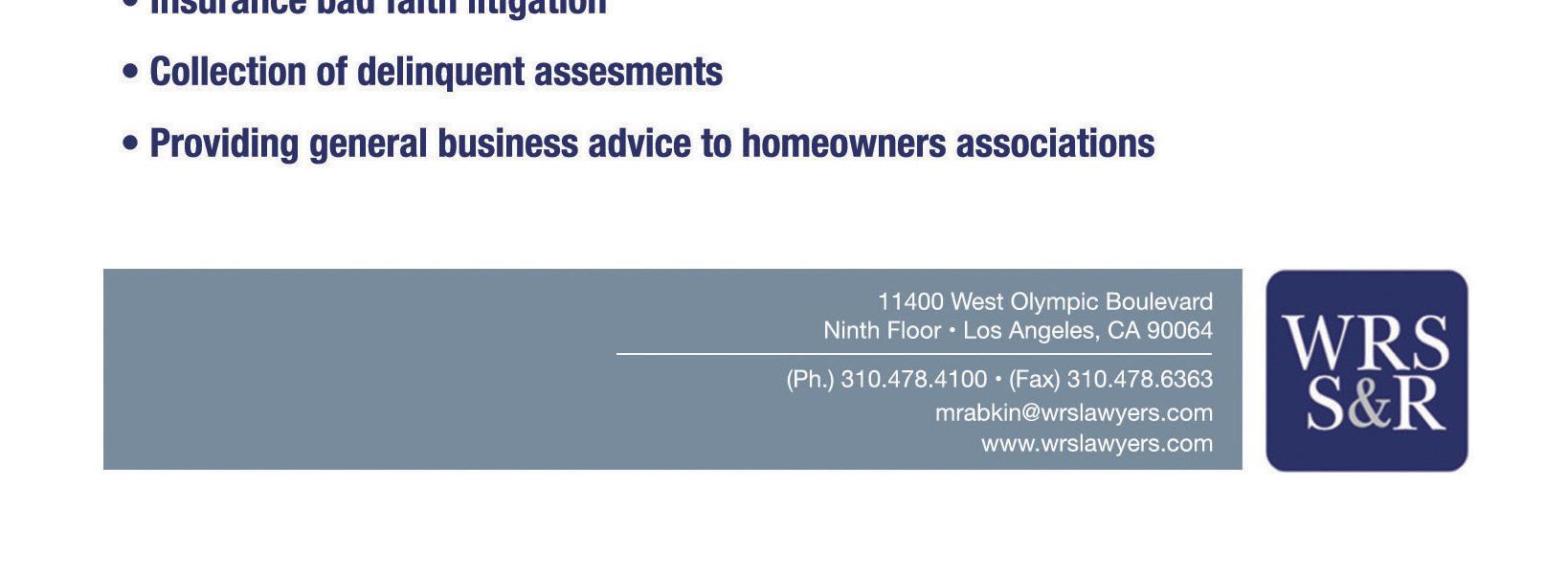

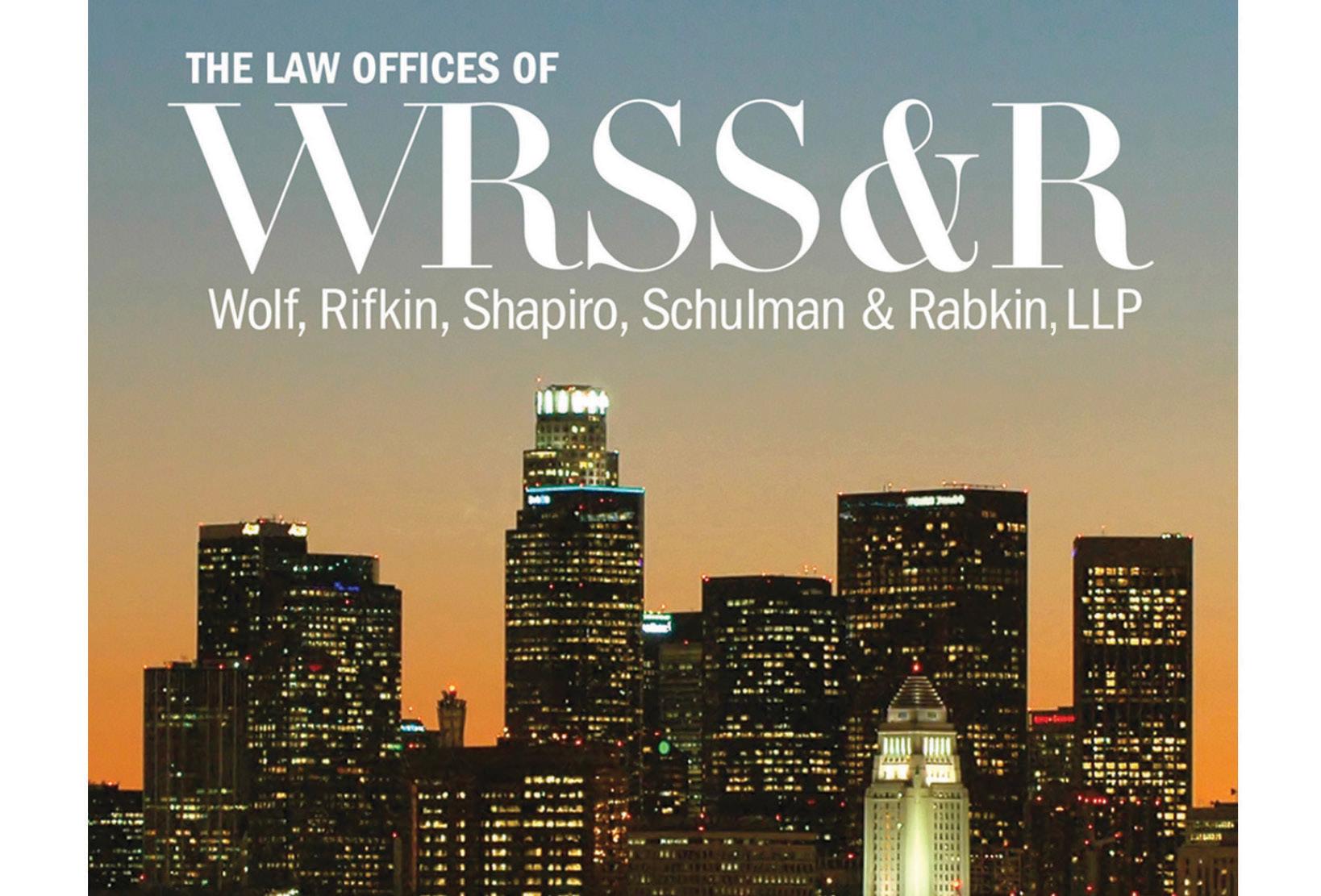
DEVELOPER TRANSITIONS,
Legal Documents
The association should ask for several legal documents from the developer during the transition period. Among the most important legal documents are the CC&Rs (including amendments), budgets, and the association’s rules.

EASEMENTS
An easement is the right to use another person’s real estate for a specific purpose. The most common easement is the right to travel over another person’s land, known as a right-ofway. Most easements are recorded against the property they affect. Some easements are also within the CC&Rs themselves. The new owner board should also ask about undisclosed development encroachments or easements.
SPECIAL AGREEMENTS
The developer and the board may enter into special agreements with government agencies or others about the common interest development. If any special agreements were made, the member-controlled board should request copies of any document related to the agreements.
RECORDED OR FILED MAPS, CONDOMINIUM PLANS, AND DEEDS
California Civil Code §4285 defines a “condominium plan” as a survey or map of a condominium project which identifies the common areas and each separate interest area.
Other legal documents which the new board should request are:
DRE PUBLIC REPORTS AND BUDGETS
The DRE Final Public Report is often called the “White Paper.” Public Reports have essential information for prospective buyers, including information about special use conditions, soil reports, schools, and the level of assessments the owner will be charged to finance association operations.
GOVERNING DOCUMENTS - CC&RS, ARTICLES OF INCORPORATION AND BYLAWS
The Articles of Incorporation create the corporate association entity and are filed with the California Secretary of State. CC&Rs are covenants that bind land use and set forth rights and limitations on how the property is used and how the community association is run. They are recorded with the County Recorder’s office. While the CC&Rs define the limitations on how the property is used and the Articles of Incorporation form the corporation, the Bylaws establish the administrative procedures for carrying out those responsibilities.
ASSOCIATION RULES (including election rules, architectural standards, community handbooks, any policies mandated by the Davis-Stirling Common Interest Development Act, etc.)
ARCHITECTURAL RECORDS
These include approval requests, forms granting or denying requests, and records confirming architectural approvals given by the developer-controlled board.
Corporate Records
Pursuant to Civil Code §4900, et seq., association boards are obligated to conduct their business at noticed meetings where minutes are prepared. Here are important corporate records to request:

Minutes of board meetings and decision-making committees
Agendas and notices for board and membership meetings
Board resolutions
Notices of CC&R violations and owner correspondence files
Legal opinions
Continues on page 12
10 The Law Journal Fall 2023 | cacm.org
Continued from page 8

cacm.org | The Law Journal Fall 2023 11 800-220-5454 Inbox@AlliedTrustee.com AlliedTrustee.com If you would like to be a part of nearly $40 million paid to our clients in the last two years, contact us today! Exclusive COLLECTABILITY PROFILE tool helps directors make informed decisions DEFERRED INVOICING allows us to collect fees and costs directly from owners Web portal with REAL-TIME ACCOUNT STATUS AND REPORTS , and online new order submission with automatic email verification Risk-free JUDGMENT RECOVERY NO HOURLY FEES CELEBRATING 30 YEARS AS YOUR PREMIER ASSESSMENT COLLECTIONS SOURCE Allied Trustee Services Debt Collection License No.: 10202-99
Financial Documents

Under Civil Code §5300, associations must maintain various financial documents relating to the project, as noted below. To properly maintain these records, the board should engage professional help, including certified public accountants, investment and tax advisors, licensed construction experts, and banking professionals. Documents that must be maintained include:
• Annual budget reports
• Bank and credit card statements
• Invoices, receipts, and canceled checks for payments made by the association
• General ledgers
• Check registers
• Budget comparison statements
• Income and expense statements
• Investment statements
• Balance sheets
• Summaries of the association’s reserves
• Reports about any reserve deficiency expressed on a per-home basis
• Notices of assessment increases or special assessments
• Statements about assessment collection and enforcement procedures
• Schedule of monetary penalties (fines)
• Reports about the association’s outstanding loans
Plans and Manuals

• Summaries of the association’s insurance program
• All past annual disclosures distributed to the membership
• State and Federal tax returns
• Inventory of the association’s real and personal property (i.e., furniture, cleaning machines, keys, key fobs, security software codes, etc.)
• Open escrows
• Pending special assessment Information
• Management reports and meeting agendas
• Secretary of State notices (identifying directors and officers)
• Lawsuit settlements
• Lawsuit records
Insurance Documents
Insurance provides essential risk protection to community associations. Those financial risks can include potential damage to the association’s common physical assets caused by fire or severe winter storms, the depletion of the association’s financial assets through embezzlement, or defending the association and its volunteer directors against lawsuits.

Most governing documents require an association to maintain specified types and sometimes specified levels of insurance. Here are examples:
1. Property and casualty insurance
2. General commercial liability (“CGL”) insurance
3. Directors & Officers (“D&O”) insurance
4. Fidelity bonds
5. Earthquake insurance
When considering insurance policies and bonds, the board should consult a knowledgeable insurance broker to ensure the association obtains enough insurance protection for all its financial risks.
Other documents and records are necessary for a new owner-board to obtain, such as building plans and maintenance manuals. Guidance from the community manager or corporate counsel can fill in the blanks. Getting the documents and records will give the new association the foundation it needs to manage the association and set the community up for better long-term success.
Tyler Berding, Esq., one of the founding partners of Berding & Weil LLP, has represented the commercial and residential real estate industry since 1974. He has successfully litigated hundreds of construction defect cases and is sought after by news outlets for his vast expertise on construction-related issues.

12 The Law Journal Fall 2023 | cacm.org
DEVELOPER TRANSITIONS, Continued from page 10
ARE YOU LOOKING TO HIRE?

Let CACM help you!
CACM is committed to our members’ professional success. Whether you are hiring or looking for the next industry-specific position, the Career Center is your “go-to” resource. Bookmark the Career Center and visit often.
Jobs can be posted for 30 or 60 days and are optimized for mobile and SEO. Premium and enhanced posts include increased visibility.

On top of posting your job opening, CACM delivers new job posts directly into email inboxes through its monthly Job Watch email and in its monthly MyCommunity member newsletter – both are sent to all of CACM’s members.
JOB WATCH MONTHLY EMAILS:
Average open rate: 33%;
Average click through rate: 7%
POSTING YOUR JOB IS AS EASY AS:
1 2
First, you’ll want to create an account in the Career Center, as this is a separate website from cacm. org . The pricing structure for members is defined on this page
Please ensure you select your membership type before purchasing (we want to make sure you receive your discount!). You’ll also find there is a live chat feature on the page. Those individuals are ready to assist you with any questions you have in real time.
cacm.org | The Law Journal Fall 2023 13
CAREERS.CACM.ORG
RECALL ELECTIONS
WHAT THEY ARE, WHY THEY’RE
by Alex Sohal, Esq.
Director recalls play a vital role in ensuring effective governance and accountability within common interest developments throughout the state. In certain instances, the membership may consider the removal of directors, a process known as a recall election. This process is governed by both the Davis-Stirling Common Interest Development Act and the California Corporations Code, which establish guidelines and procedures that associations follow to carry out a director recall. This article aims to provide an overview of how director recalls are conducted in compliance with these laws and some key considerations for the board if it receives a petition for a director recall.
The triggering action for a recall election is the delivery of a petition to the association signed by at least 5% (10% for stock cooperatives) of the membership. The specific method of delivery of the petition is typically stated in the bylaws, and the association should confirm that the signatures are valid by verifying addresses and owners. In some instances where there may be some skepticism of the signatures, making a few phone calls or reaching out via e-mail to confirm members are aware of the recall
petition’s purpose can be helpful. The association must also determine whether the recall is for the entire board as a group, every director individually, or some portion of the board, as this can impact the timeline for conducting the election.
Upon receiving a valid recall petition, the board must set a date for the special meeting via written notice to all members within 20 days of receipt of the petition. The date of the meeting, pursuant to Corporations Code §7511, must not be less than 35 days nor more than 150 days after receipt of the petition. Failure of the board to set the meeting date within 20 days of receipt allows the petitioners to set the date, so prompt action by the board is recommended. Reaching out to counsel upon delivery of the petition to discuss any uncertainty or questions regarding the petition would be appropriate.
14 The Law Journal Fall 2023 | cacm.org
ESSENTIAL, AND WHAT TO DO
The next steps depend on how many directors are subject to recall, as stated in the petition. There is also some flexibility in how an association may navigate the different options. The number of potential open seats is clear if the recall is for the entire board or only one director. Either the recall is successful, and all directors (or individual directors) are recalled, or the recall is unsuccessful. Given this clarity, the board can conduct the recall election and the election for the replacement directors simultaneously. If the board chooses this method, the association must follow the typical director election requirements.
If the recall petition is for less than the entire board but more than one director, the exact number of open seats is still being determined, as the recall may be successful for some directors but not others. As a result of this uncertainty, some boards choose to delay a director election until after the recall election is completed so the exact number of open seats, if any, is known. This option is allowed under the law and could be used by a board to reduce any confusion among the membership regarding the ballot and overall procedure.
If the recall election is successful and the replacement director election is held directly after the recall election, there will be a significant amount of time when the recalled directors remain on the board. This could cause some unrest amongst the petitioning members. The association’s bylaws should be consulted to determine whether a director is required to step down immediately upon recall or if they may remain on the board until their successor is elected. In
any case, the recalled director may submit their resignation at any time. Any director elected to fill a recalled director’s seat is to serve the remainder of the term of the recalled director.

With respect to a director election needed due to a recall, the typical director election requirements apply, including the nomination period, pre-ballot notice, and secret ballot process. The question of when the director election should be conducted can be nuanced and varied across associations. It is recommended that an association reach out to legal counsel to discuss the timing of the election to ensure it complies with the association’s governing documents and the law.
It should be noted that if an association’s governing documents allow cumulative voting, the thresholds for a successful recall election are calculated using a specific formula unique to each association, and the board should work closely with counsel to ensure the correct figures are used. As you may see if you review the formula, this is a rather convoluted system that typically causes confusion and strife amongst the petitioning members as it allows a minority of the voters to block a recall.
As managers, you must always remember your relationship with the association and whichever board is currently serving. If a recall petition is submitted, working closely with counsel to ensure the correct procedures are followed and treating the petition reasonably are good steps to help ensure there is no claim of favoritism or animosity from a newly incoming board.


cacm.org | The Law Journal Fall 2023 15
Alex Sohal, Esq. is a partner with McGuire Schubert Sohal LLP in Stockton, specializing in general counsel representation of common interest developments. He has eight years of CID industry experience.
COMMON AREA SAFETY IS NO JOKE
By Colin McCarthy, Esq.
Did you hear about the case of the stolen luggage? The lawyer won the lawsuit in less than six hours. It turned out to be …. a briefcase.
Did you hear about the association that knew about criminal activity and didn’t do anything to prevent it? About the association that ignored maintenance responsibilities in the common area, which led to an injury? They did not have the right insurance coverage, so the directors and members were subject to liability. These may not be “brief cases,” but this article will discuss association obligations and duties regarding common area safety concerns.
An association has a duty to act when it is aware of and can control the response to criminal activity occurring on or near association property. The California Supreme Court has held that an association has “a duty to exercise due care for the residents’ safety in those areas under their control.” Frances T. v. Village Green Owners Assn., 42 Cal. 3d 490, 499 (1986). In that case, a resident who lived off the common area park was sexually assaulted. There had been a “crimewave” recently, and the park over which the association had control had poor exterior lighting. The plaintiff was able to sue because she convinced the court that the
association was responsible for the lighting and that the lack of it was a contributing factor to her assault. The takeaway: the association knew about a crime risk and could have easily mitigated risk by maintaining adequate exterior lighting.
The association’s duty in this regard is not unlimited. The courts will examine two factors: “the foreseeability of the harm and the burden on the landlord created by the duty to protect against the harm.” Vasquez v. Residential Invs., Inc., 118 Cal. App. 4th 269, 280 (2004). This means there is a liability if the association could have predicted that there would be a specific type of harm, and it could have been mitigated without much difficulty. In the Frances T. case, the association could have put in exterior lighting without much of a burden and potentially prevented a rape. The harm was reasonably foreseen because there had been a crime spree, and it was not hard to install lighting to potentially prevent harm. So, if you, as a manager, are notified about potential criminal activity and a request to correct it, consider responding. Contact counsel and at least warn residents of criminal activity of which you are made aware. Take reasonable steps to prevent harm.

16 The Law Journal Fall 2023 | cacm.org
How many lawyers does it take to screw in a light bulb? Two, one to screw in the light bulb and one to sue the ladder company.
An association does not need to hire lawyers to install lightbulbs, but it should be careful to do routine maintenance to prevent trip and slip hazards. In California, “everyone is responsible for an injury to another caused by his or her want of ordinary care or skill in the management of his or her property.” Chee v. Amanda Goldt Prop. Mgmt., 143 Cal. App. 4th 1360, 1369 (2006). This applies to associations regarding the common area property they manage. Thus, if you fail to maintain a tree that is known to be a fall risk, and it falls on someone and hurts them, the association will be liable for those injuries. The same principles regarding third-party criminal activity above apply here. Did the association know or should have known about the risk and failed to prevent it? If so, there will be a lawsuit.
In this Chee case, the plaintiff resident sued because she was bit by a Jack Russell Terrier owned by another resident. The association knew about the terrier but did not know it had a propensity to bite. So, the association was not liable. In another case, there was a very minor crack in an association-maintained sidewalk. A person
tripped on it, but because it was less than a half inch, the court ruled it was a “trivial defect.” So, the takeaway is to take care of what you can and know about. If you do not know about it or it is not in your control, there is no need to worry. But if you do, and it is, proceed with your obligations or risk a lawsuit.
If an apple a day keeps the doctor away, how many orchards does it take to keep a lawyer away? Haha, very funny. You can keep lawyers away by having the right insurance. For third-party liability purposes, the law provides that the volunteer director will be subject to personal liability if the association does not carry general liability insurance for the association and directors and officers for the officers with certain limits. For
developments with 100 or fewer separate interests, there must be a minimum of $500,000 in coverage for both types of policies. The minimum rises to $1,000,000 if the development has more than 100 separate interests. If the 100 or fewer separate interest association does not have $2,000,000 in general liability coverage, its members can be personally sued for losses occurring in the common area. ($3,000,000 for developments with more than 100 separate interests). If your governing documents do not require these coverages, consider amending them.
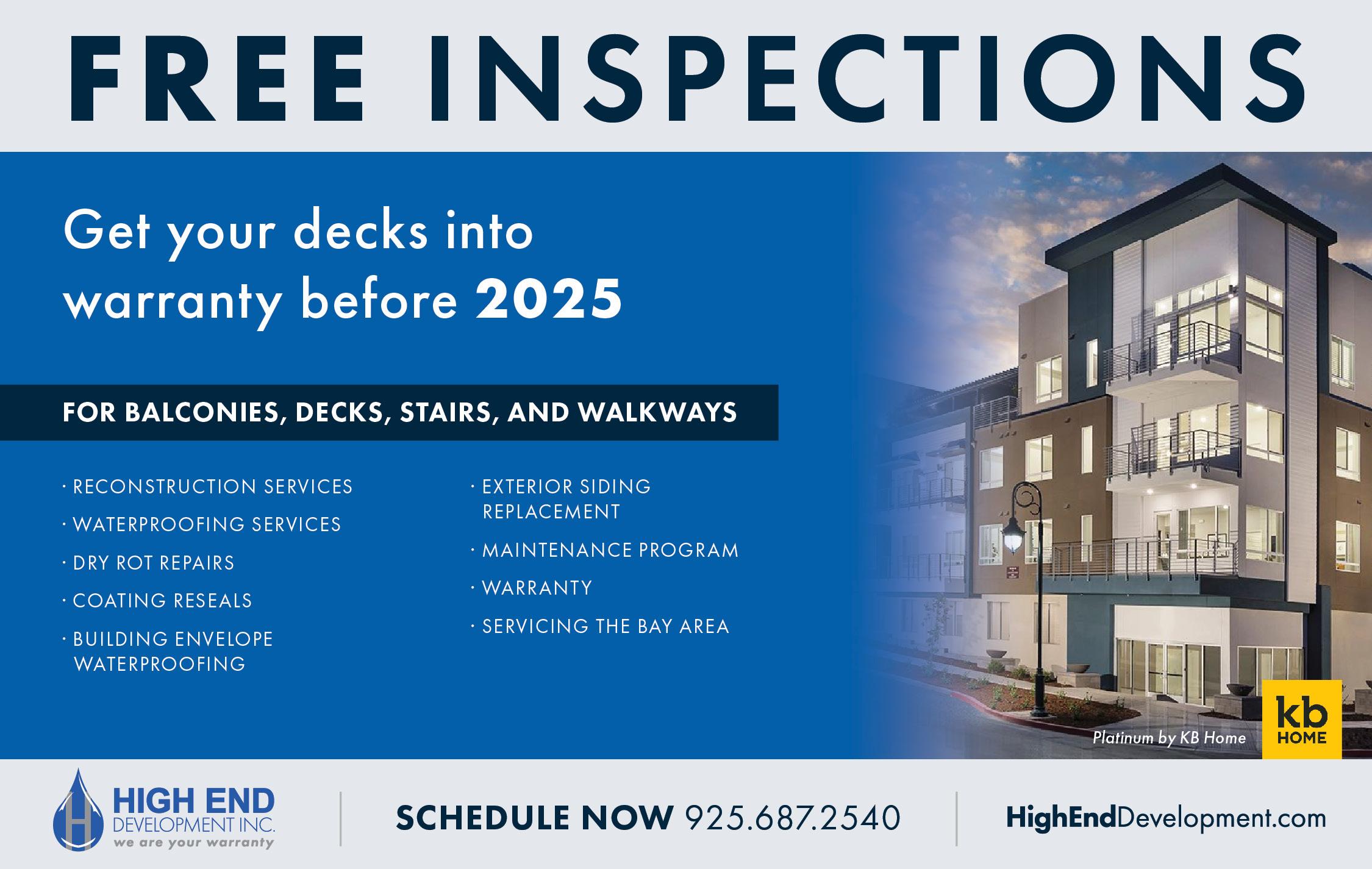

cacm.org | The Law Journal Fall 2023 17
Colin McCarthy, Esq., has 25 years of experience practicing law. He is a partner with the firm Angius & Terry, LLP, with locations in Walnut Creek and San Jose.
Take care of what you can and know about or risk a lawsuit.
2023-2024 LEGAL DIRECTORY
ASSESSMENT COLLECTION SERVICES
ALLIED TRUSTEE SERVICES
Assessment Collection & Judgment Recovery Services

Stefan Murphy
Serving All of California For Over 30 Years
990 Reserve Dr., Ste. 208 Roseville, CA 95678 (800) 220-5454
smurphy@alliedtrustee.com www.alliedtrustee.com
ALTERRA ASSESSMENT RECOVERY
Assessment Collection Services
Steven J. Tinnelly Esq., President
Advanced, Efficient, Effective HOA Assessment Recovery 27101 Puerta Real, Ste. 250 Mission Viejo, CA 92691 (888) 818-5949
ramona@tinnellylaw.com www.alterracollections.com
COMMUNITY LEGAL ADVISORS, INC.

General Counsel & Assessment Collections
Mark Guithues, Esq., Laurie Masotto, Esq., Jeffrey Speights, Esq. Inland Empire, Orange County, San Diego 509 N. Coast Hwy., Oceanside, CA 92054 (760) 529-5211 • Fax (760) 453-2194
mark@attorneyforhoa.com www.attorneyforhoa.com
18 The Law Journal Fall 2023 | cacm.org
FELDSOTT, LEE & NICHTER, ATTORNEYS AT LAW
General Counsel, Community Association Law
Stanley Feldsott, Martin Lee, and Austin Nichter
Laguna Hills, California
23161 Mill Creek Dr., Ste. 300 Laguna Hills, CA 92653 (949) 729-8002 • Fax (949) 729-8012
feldsott@gmail.com www.cahoalaw.com
UNITED TRUSTEE SERVICES
Trusted Partners In Assessment Collections
Lisa E. Chapman
HOA Assessment Collection Services 696 San Ramon Valley Blvd., Ste. 353 Danville, CA 94526 (925) 855-8554 • Fax (925) 855-8559
lisa@unitedtrusteeservices.com www.unitedtrusteeservices.com
ATTORNEYS
BEAUMONT TASHJIAN
General Counsel & Assessment Collection Services

Jeffrey A. Beaumont and Lisa A. Tashjian
Serving California With General Counsel & Collection Services
5008 Chesebro Rd., Ste. 200 Agoura Hills, CA 91301 (866) 788-9998 • Fax (818) 884-1087 info@HOAattorneys.com www.hoaattorneys.com
BERDING | WEIL
Construction Defect Litigation
Steven Weil, Tyler Berding, Chad Thomas, Daniel Rottinghaus, Andrew Baugh, Paul Windust
Walnut Creek, San Diego, Orange County, Sacramento
2175 North California Blvd., Ste. 500
Walnut Creek, CA 94596
(800) 838-2090 • Fax (925) 820-5592
jjackson@berdingweil.com
www.berding-weil.com
COMMUNITY LEGAL ADVISORS, INC.
General Counsel & Assessment Collections
Mark Guithues, Esq., Laurie Masotto, Esq., Jeffrey Speights, Esq.
Inland Empire | Orange County | San Diego
509 N. Coast Hwy. Oceanside, CA 92054
(760) 529-5211 • Fax (760) 453-2194
mark@attorneyforhoa.com www.attorneyforhoa.com
EPSTEN, APC
Community Association Law, Construction Defect, Litigation & Assessment Recovery
Jon Epsten, Esq. & Susan Hawks McClintic, Esq.
San Diego | Inland Empire | Coachella Valley 3111 Camino del Rio North, Ste. 560 San Diego, CA 92108 (858) 527-0111 • Fax (858) 527-1531
jepsten@epsten.com www.epsten.com
FIORE RACOBS & POWERS, A PLC
Community Association Law and Assessment Collections
Jacqueline D. Foster, Esq., Peter E. Racobs, Esq., & John R. MacDowell, Esq. The Recognized Authority in Community Association Law
Orange County | Inland Empire | Coachella Valley l San Diego County (877) 31-FIORE • Fax (949) 727-3311
dweissberg@fiorelaw.com
www.fiorelaw.com
FLANAGAN LAW, APC
Community Association Law and Collections
Tim Flanagan, Esq. San Diego, Orange County, Temecula, Coachella Valley 6050 Santo Road, Suite 220 San Diego, CA 92124
(619) 489-3100
tim@flanaganhoalaw.com
www.flanaganhoalaw.com
GURALNICK & GILLILAND, LLP
Association Law, Assessment Collections, General Counsel Wayne S. Guralnick, Robert J. Gilliland Jr. Serving Community Associations for Over 30 Years
40004 Cook St., Ste. 3 Palm Desert, CA 92211 (760) 340-1515 • Fax (760) 568-3053
wayneg@gghoalaw.com
www.gghoalaw.com
HICKEY & ASSOCIATES, P.C.
Community Association Law
David E. Hickey, Esq.
27261 Las Ramblas, Ste. 120 Mission Viejo, CA 92691
(949) 614-1550 • Fax (949) 748-3990
dhickey@hickeyassociates.net
www.HickeyAssociates.net
HUGHES GILL COCHRANE TINETTI, PC
Community Association & Construction Defect Law
John P. Gill, Esq. l Amy K. Tinetti, Esq.
2820 Shadelands Dr., Ste. 160 Walnut Creek, CA 94598
(925) 926-1200 • Fax (925) 926-1202
atinetti@hughes-gill.com
www.hughes-gill.com
THE JUDGE LAW FIRM
HOA Law
James Judge, Esq.
Providing General Counsel & Collection Services Throughout CA for Over 20 Years
18650 MacArthur Blvd., Ste. 450 Irvine, CA 92612
(949) 833-8633 • Fax (949) 833-0154
info@thejudgefirm.com
www.thejudgefirm.com
KRIGER LAW FIRM
Community Association Law and Assessment Recovery
Bradley Schuber
Serving Community Associations for Over 30 Years
8220 University Ave., Ste. 100
La Mesa, CA 91942
(619) 589-8800 • Fax (619) 589-2680
bschuber@krigerlawfirm.com
www.krigerlawfirm.com
LOEWENTHAL, HILLSHAFER & CARTER, LLP
Construction Defect Litigation
David Loewenthal I Robert Hillshafer
Los Angeles, Ventura & Surrounding Counties
5700 Canoga Ave., Ste. 160
Woodland Hills, CA 91367
(866) 474-5529 • Fax (818) 905-6372
info@lhclawyers.net
lhclawyers.net
Continues on page 20
cacm.org | The Law Journal Fall 2023 19
2023-24 LEGAL DIRECTORY
Continued from page 19
THE NAUMANN LAW FIRM, PC
Construction Defect Litigation
Construction Defect Analysis
William H. Naumann
SERVING CALIFORNIA WITH MORE THAN 40 YEARS EXPERIENCE
10200 Willow Creek Rd., Ste. 150 San Diego, CA 92131
(844) 492-7474 • Fax (858) 564-9300 elaine@naumannlegal.com
www.naumannlegal.com
PRATT & ASSOCIATES, APC
Community Association Law
Sharon Glenn Pratt
Los Gatos, CA
634 North Santa Cruz Ave., Ste. 204 Los Gatos, CA 95030
(408) 369-0800 • Fax (408) 369-0752 spratt@prattattorneys.com www.prattattorneys.com
RAGGHIANTI FREITAS LLP
Community Association Law
Construction Defects & Mediation
David F. Feingold, Esq.
Matthew A. Haulk, Esq.
Serving Bay Area Communities Since 1986 1101 Fifth Ave., Ste. 100 San Rafael, CA 94901 (415) 453-9433 • Fax (415) 453-8269
dfeingold@rflawllp.com www.rflawllp.com
RICHARDSON OBER, LLP

Community Association Law, General Counsel, Assessment Recovery
Kelly G. Richardson, Matt D. Ober
Throughout California 234 E. Colorado Blvd., Ste. 800 Pasadena, CA 91101
(877) 446-2529 • Fax (415) 453-8269
info@roattorneys.com
www.roattorneys.com
SWEDELSONGOTTLIEB
Community Association Law, Construction Defect, Assessment Collection
David C. Swedelson, Esq.
Sandra L. Gottlieb, Esq.
Los Angeles | Orange County | Palm Desert | San Francisco l Ventura 11900 W. Olympic Blvd., Ste. 700 Los Angeles, CA 90064 (800) 372-2207 • Fax (310) 207-2115 slg@sghoalaw.com www.lawforhoas.com
TINNELLY LAW GROUP
Community Association Law
Steven J. Tinnelly, Managing Partner & Richard A. Tinnelly, Senior Partner
Orange County | Los Angeles | San Diego | Coachella Valley | Northern CA 27101 Puerta Real, Ste. 250 Mission Viejo, CA 92691
(949) 588-0866 ramona@tinnellylaw.com www.tinnellylaw.com
WHITE LAW GROUP, INC. COMMUNITY ASSOCIATION LAW, CONSTRUCTION DEFECT LAW
Steven M. White, Esq., James P. Hillman, Esq. COST EFFECTIVE SOLUTIONS BASED ON EXPERIENCE
1530 The Alameda, Ste. 215 San Jose, CA 95126
(408) 345-4000 • Fax (408) 345-4020 info@whitelginc.com
www.wm-llp.com
WHITNEY PETCHUL APC
Community Association Attorneys
Fred T. Whitney, Esq. / Dirk E. Petchul, Esq. From Inception To Build-Out And Beyond 27 Orchard Rd. Lake Forest, CA 92630
(949) 766-4700 • Fax (949) 766-4712
dpetchul@whitneypetchul.com
www.whitneypetchul.com
WOLF, RIFKIN, SHAPIRO, SCHULMAN & RABKIN, LLP
Community Association Law
Michael W. Rabkin, Esq.
11400 W. Olympic Blvd., 9th Floor Los Angeles, CA 90064
(310) 744-4100
• Fax (310) 479-1422
mrabkin@wrslawyers.com
www.wrslawyers.com
CONSTRUCTION DEFECTS
BERDING | WEIL
Construction Defect Litigation
Steven Weil, Tyler Berding, Chad Thomas, Daniel Rottinghaus, Andrew Baugh, Paul Windust
Walnut Creek, San Diego, Orange County, Sacramento
2175 North California Blvd., Ste. 500
Walnut Creek, CA 94596
(800) 838-2090 • Fax (925) 820-5592
jjackson@berdingweil.com
www.berdingweil.com
CHAPMAN & INTRIERI, LLP
General Counsel & Construction Defect Litigation
John W. Chapman, Esq. & Mark G. Intrieri, Esq.
Alameda l Roseville l Orange County l San Diego
2236 Mariner Square Dr., Ste. 300 Alameda, CA 94501
(510) 864-3600 • Fax (510) 864-3601
jchapman@cnilawfirm.com
www.cnilawfirm.com
FENTON GRANT KANEDA & LITT, LLP
Construction Defect Litigation & CID Education
Charles R. Fenton, Esq. & Joseph Kaneda, Esq.
Servicing California & Nevada
Communities for Over 25 Years
2030 Main Street, Ste. 550 Irvine, CA 92614
(877) 520-3455 • Fax (949) 435-3801
kkrupp@fentongrant.com
www.fentongrant.com
20 The Law Journal Fall 2023 | cacm.org
THE MILLER LAW FIRM
Construction Defect Analysis & Litigation
Thomas E. Miller, Esq. & Rachel M. Miller, Esq.
The Authority in California Construction Defect Claims for 40 Years

19 Corporate Plaza Dr. Newport Beach, CA 92660
(800) 403-3332 • Fax (929) 442-0646
rachel@constructiondefects.com
www.constructiondefects.com
RILEY PASEK CANTY LLP
Construction Defect Resolution & Construction Defect Analysis Attorneys
Rick Riley, Melissa Pasek, Kevin Canty
Representing Community Associations
Throughout the State of California
780 San Ramon Valley Blvd. Danville, CA 94526
(844) 775-5000
JWebster@RileyPasek.com
www.rileypasek.com
ELECTION ADMINISTRATION
ACCURATE OUTCOME, LLC
Election Administration
Denise La Fond
Because Accuracy Matters
18336 Soledad Canyon Rd., Ste. 3125 Canyon Country, CA 91386
(661) 310-8828
info@accurateoutcome.net
www.accurateoutcome.net
THE INSPECTORS OF ELECTION
Providing Superior Election Support for California HOA’s Since 2006
Kurtis Peterson
Completely Independent Full-Service Election Provider
2794 Loker Ave. W., Ste. 104 Carlsbad, CA 92010
(888) 211-5332 • Fax (888) 211-5332
kurtis@theinspectorsofelection.com
www.theinspectorsofelection.com
LIBERTY HOA ELECTION SERVICES, LLC
Election Administration
Deanna M. Libert
We Make Association Voting
Management Easy
1900 Camden Ave. San Jose, CA 95124 (408) 482-9659
deanna@hoaelection.com www.hoaelection.com
RESERVE STUDY FIRMS
THE HELSING GROUP, INC.
Reserve Study Firm
Ryan Leptien
Serving All of California
4000 Executive Pkwy., Ste. 100 San Ramon, CA 94583 (925) 355-2100 • Fax (925) 355-9600
reservestudies@helsing.com www.helsing.com
VENDOR COMPLIANCE
ASSOCIATION SERVICES NETWORK
Vendor Compliance
David Jeranko
Vendor Compliance & Risk Management

24000 Alicia Pkwy., Ste. 17-442
Mission Viejo, CA 92691 (949) 300-3702 • Fax (877) 404-2008
davidj@asn4hoa.com
www.asn4hoa.com
cacm.org | The Law Journal Fall 2023 21












 John D. Hansen, Esq., is a partner at Baydaline & Jacobsen LLP in Sacramento, which serves as general counsel to community associations. He has 14 years of experience advising boards of common interest developments on HOA law.
John D. Hansen, Esq., is a partner at Baydaline & Jacobsen LLP in Sacramento, which serves as general counsel to community associations. He has 14 years of experience advising boards of common interest developments on HOA law.










 by Tyler P. Berding, Esq.
by Tyler P. Berding, Esq.





























